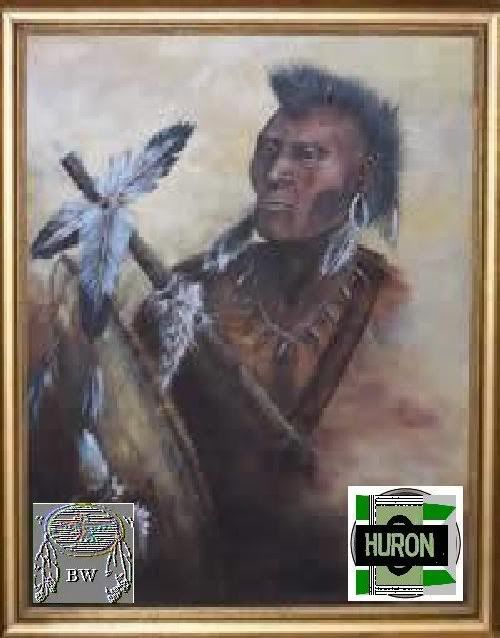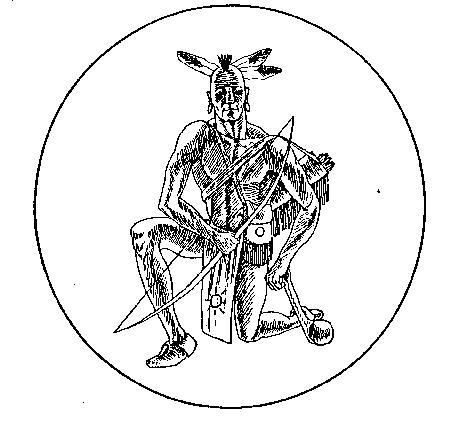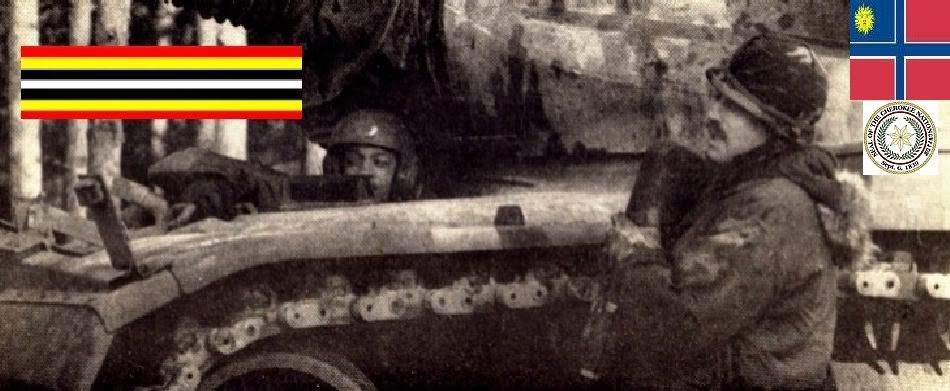|

Chief Ahatsistari
Warriors Citation
Eustache, a great Huron warrior, member of the Attingueenongnahak tribe (Cord people) and resident at the mission of Saint-Joseph
II (Teanaostaiaë), near the present Hillsdale, Ontario; baptized Eustache, Holy Saturday 1642, at the age of 40; killed during
August of the same year. In the opinion of Father Charles Garnier, Ahatsistari was a man of noble and generous nature as well
as a great warrior, whose courage and yearly military exploits against the Iroquois merited for him the reputation of chief
warrior in the Huron country. In 1634 a peace had been agreed upon by the Senecas and the Hurons, which lasted, with some
interruptions, until 1639, when the Hurons resumed the war against the Senecas. In 1641, as the chief of a band of 50 Hurons,
Ahatsistari put to rout 300 Iroquois and even captured some of them. On another occasion, during the summer of the same year,
while Ahatsistari and his companions were “crossing a great lake [Lake Ontario] which separates the Hurons from their
Enemies,” a number of large canoes filled with Iroquois endeavoured to attack them. Instead of seeking safety in flight,
Ahatsistari urged his warriors forward. Jumping into an Iroquois canoe, he split the head of the first enemy he met, threw
two others overboard, upset the canoe by plunging into the water, and, while swimming with one hand, killed with the other
all who came near him.

This sudden onslaught so disconcerted the Iroquois that they fled. Ahatsistari regained his canoe and captured the Iroquois
who remained alive in the water. In June 1642, Ahatsistari, with other Indians, convoyed Father Jogues from the Huron country
to Quebec, where they arrived safely after a journey of more than 35 days. Having completed the business which brought them
to Quebec, Ahatsistari and his companions set out from Trois-Rivières 1 August, on their return journey to the Huron country.
Forty persons, distributed among a number of canoes, made up the party. In addition to Ahatsistari, Father Jogues, René Goupil,
and Guillaume Couture, the travellers included other renowned warriors and Huron Christians, Étienne Totiri, Charles Tsondatsaa,
Joseph Teondechoren, and Thérèse Oionhaton, returning from the Ursuline Convent at Quebec. On 2 August, those in the advance
canoe noticed fresh footprints in the sand and clay on the shore of the river. A halt was made to discuss the situation. Some
Hurons stated that the footprints belonged to enemies, while others identified them as the marks of Algonkins. Ahatsistari
judged the tracks to represent a party which would not outnumber his own and encouraged everyone to continue without fear.
The journey was resumed but not long after the above episode, the occupants of the canoes were again startled by arquebus
shots and the shouts of Mohawks, who rose from the grass and brushwood along the shore of the St. Lawrence. All was confusion.
Some Hurons abandoned their canoes, weapons, and supplies and fled into the woods, while others resisted the attacking Mohawks.
Eventually another band of Mohawks joined in the battle and overpowered the resisting Hurons and Frenchmen. Twenty-two in
all fell into the hands of the Mohawks, including Ahatsistari, Father Jogues, René Goupil, and Guillaume Couture. They were
taken to the Mohawk country as captives and during the journey some received cruel treatment. Ahatsistari, for example, was
deprived of both thumbs and a pointed stick was forced into the open wound up to his elbow. Once arrived at the Mohawk villages,
the prisoners experienced further hardships. After seven days, the Mohawk chiefs decided to spare the lives of all the Huron
captives except three, who were condemned to die by fire. One of these three was Ahatsistari. He suffered at the village of
Tionontoguen (Teonontogen). Instead of uttering the usual cry of other dying captives, “Arise, someone from our bones
as avenger”, Ahatsistari begged those of his Huron countrymen who were present not to allow the remembrance of his fate
to influence in any way the conclusion of a peace with the Iroquois. From: historical accounts & records


LINK TO BRAVEHORSE WARRIORS VOLUME TWO
|

